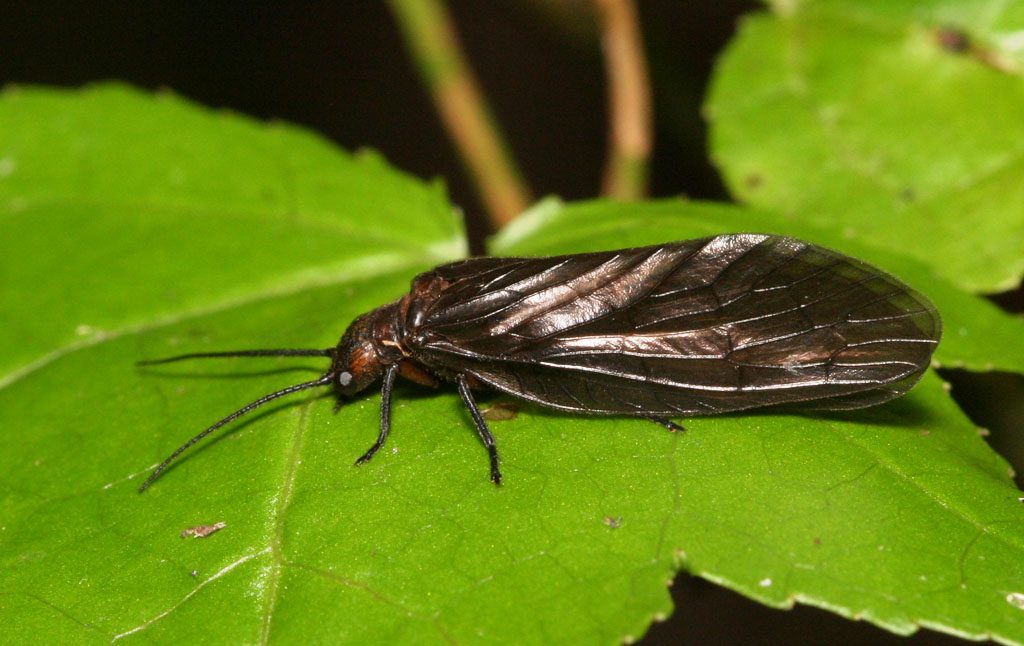| (27 intermediate revisions by 8 users not shown) | |||
| Line 1: | Line 1: | ||
| − | {{ | + | <noinclude><translate><!--T:1--> |
| − | | | + | </noinclude> |
| − | | | + | |
| + | <!--T:2--> | ||
| + | {{ | ||
| + | |||
| + | <!--T:3--> | ||
| + | Species id | ||
| + | | common_name = Alderflies, Dobsonflies, and Fishflies | ||
| + | | latin_name = Megaloptera | ||
| image = Sialis spPCCA20050708-9036A.jpg | | image = Sialis spPCCA20050708-9036A.jpg | ||
| − | | | + | | order = '''Megaloptera''' |
| − | |||
| − | |||
| − | |||
| − | |||
| − | |||
| − | |||
| − | |||
| − | |||
| − | |||
| − | |||
| − | |||
| − | '''Megaloptera''', from the | + | <!--T:4--> |
| + | '''Megaloptera''', from the Greek words ''mega'', meaning large, and ''ptera'', meaning wing, undergo the most rudimentary form of complete metamorphosis among the insects (there are fewer differences between the larval and adult forms of Megaloptera than in any other order of insects), and their aquatic larvae dwell in fresh water, around which the adults also live. Females lay their eggs in large masses on vegetation that is proximate to water. The larvae are carnivorous, possessing strong jaws that they use to capture other aquatic insects. They grow slowly, taking several years to reach the last larval stage. When they reach maturity, the larvae crawl out onto land to pupate in damp soil or under logs. The short-lived adults emerge later to mate - many species never feed as adults, living only a few days or hours. The most well-known of the Megaloptera is probably the dobsonfly, in which males have tusk-like mandibles - but while formidable in appearance, they are relatively harmless to humans, as well as all other organisms. These huge mandibles, much like a peacock's feathers, serve no purpose other than to attract mates. Hellgrammites, which are dobsonfly larvae, are often used for bait. | ||
| + | <!--T:5--> | ||
There are about 300 known species. | There are about 300 known species. | ||
| − | + | <!--T:6--> | |
| − | + | }} | |
| − | + | <noinclude></translate></noinclude> | |
| − | |||
| − | |||
| − | |||
| − | |||
| − | |||
| − | |||
| − | |||
| − | |||
| − | |||
Latest revision as of 12:29, 27 July 2022
Alderflies, Dobsonflies, and Fishflies (Megaloptera)
Order: Megaloptera Megaloptera, from the Greek words mega, meaning large, and ptera, meaning wing, undergo the most rudimentary form of complete metamorphosis among the insects (there are fewer differences between the larval and adult forms of Megaloptera than in any other order of insects), and their aquatic larvae dwell in fresh water, around which the adults also live. Females lay their eggs in large masses on vegetation that is proximate to water. The larvae are carnivorous, possessing strong jaws that they use to capture other aquatic insects. They grow slowly, taking several years to reach the last larval stage. When they reach maturity, the larvae crawl out onto land to pupate in damp soil or under logs. The short-lived adults emerge later to mate - many species never feed as adults, living only a few days or hours. The most well-known of the Megaloptera is probably the dobsonfly, in which males have tusk-like mandibles - but while formidable in appearance, they are relatively harmless to humans, as well as all other organisms. These huge mandibles, much like a peacock's feathers, serve no purpose other than to attract mates. Hellgrammites, which are dobsonfly larvae, are often used for bait. There are about 300 known species.

